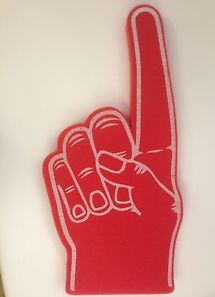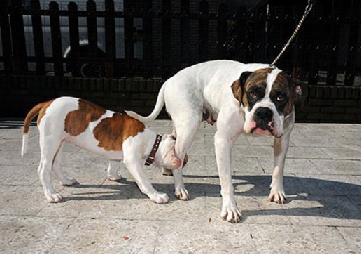Go Team Intertech @ the North American Pond Hockey Championship
 Best of luck to Team Intertech @ the North American Pond Hockey Championship. The team’s first game is at noon this Friday.
Best of luck to Team Intertech @ the North American Pond Hockey Championship. The team’s first game is at noon this Friday.
 Best of luck to Team Intertech @ the North American Pond Hockey Championship. The team’s first game is at noon this Friday.
Best of luck to Team Intertech @ the North American Pond Hockey Championship. The team’s first game is at noon this Friday.
 In the article, “In the Company of Givers and Takers” by Wharton management professor Adam Grant in a recent issue of Harvard Business Review, three attributes are identified as common among many employees who are considered “givers” in the workplace: timidity, availability and empathy. Professor Grant describes it this way:
In the article, “In the Company of Givers and Takers” by Wharton management professor Adam Grant in a recent issue of Harvard Business Review, three attributes are identified as common among many employees who are considered “givers” in the workplace: timidity, availability and empathy. Professor Grant describes it this way:
Timidity: “Generous people tend not to ask for help, but they will do so if they are acting as agents on behalf of others.” He proposes encouraging this type of employee to “act as agents—to advocate for others while negotiating for themselves.”
My take: In practical terms, this may mean the giver learns to say something along the lines of, “I would like to help you, but my customer is expecting my project tomorrow. I don’t want to disappoint him.”
We also make sure employees understand that we expect them to act like adults and take ownership for their own productivity. At the very least, they need to create awareness of the business impact of their daily heroics so management can provide support as necessary.
Availability: If givers drop everything when anyone asks for a favor, their own productivity suffers. The key is to carve out time and space for uninterrupted work.
My take: Leaders can assist by helping employees set boundaries. We have financially compensated employees who have agreed to help others. Along with the compensation comes strict guidelines about when that help can occur. We need to ensure that helping does not interfere with the helper’s primary work responsibilities. We also require that the help only consist of mentoring, not actually “doing” the other employees’ work.
Empathy: Givers can be easily swayed by emotional appeals for their assistance, but they can make choices about helping when they are taught to consider others’ perspectives in addition to their feelings.
My take: Helping givers see the big picture, such as how the company is performing against goals on a quarterly basis, connects their individual choices to the company’s mission. Discussions about meeting client’s expectations also can be helpful.
The bottom line:
If the work environment doesn’t support supporting, I believe the results will be a company culture where people are more concerned about holding their own position versus helping others. At the end of the day, most bright, hard-working people want to be part of a firm that recognizes success of the business is more important than any single individual. Or, to put it more simply, when we all succeed, we all succeed!
 As noted last time, it’s a good thing when employees help each other. But there are some potential negative consequences too. An article, “In the Company of Givers and Takers” by Wharton management professor Adam Grant in a recent issue of Harvard Business Review, explores this topic in detail. I’m sharing highlights, starting with my first two posts in this series that explained the benefits of employee generosity.
As noted last time, it’s a good thing when employees help each other. But there are some potential negative consequences too. An article, “In the Company of Givers and Takers” by Wharton management professor Adam Grant in a recent issue of Harvard Business Review, explores this topic in detail. I’m sharing highlights, starting with my first two posts in this series that explained the benefits of employee generosity.
Today we’ll turn our attention to the potential “dark side” of employees who help each other. Specifically, the costs of excessive helping to the employee doing the helping, as well as the company as a whole.
Does your organization use a forced-ranking performance evaluation? This is a system that requires for every employee who earns a five another must be given a one. An obvious conclusion under this type of system would be that employees who spend a lot of time helping others might be less productive in terms of completing their own work assignments and pay the price at review time.
In other companies, there are competitive bonus pools. More money for stars equals less for everyone else. Again, this type of system “pits employees against one another, encouraging them to undercut rather than support their colleagues’ efforts.”
Even without a dog-eat-dog scoring system, “strict delineation of responsibilities and a focus on individual performance metrics can cause a ‘not my job’ mentality to take hold,” writes professor Grant. He then poses the following questions:
How can managers promote generosity without cutting into productivity and undermining fairness? How can they avoid creating situations where already-generous people give away too much of their attention while selfish coworkers feel they have even more license to take. In short, can they protect good people from being treated like doormats?
Grant goes on to suggest that part of the solution must “involve targeting the takers in the organization—providing incentives for them to collaborate and establishing repercussions for refusing reasonable requests.”
But much of the responsibility must be assigned to the givers themselves, with management “helping the givers act on their generous impulses more productively.”
Next post: Practical tips for helping good people to not become “doormats” and protecting work objectives in the process!
 “Every day, employees make decisions about whether to act like ‘givers’ or like ‘takers.’ When they act like givers, they contribute to others without seeking anything in return. They might offer assistance, share knowledge, or make valuable introductions. When they act like takers, they try to get people to serve their ends while carefully guarding their own expertise and time.”
“Every day, employees make decisions about whether to act like ‘givers’ or like ‘takers.’ When they act like givers, they contribute to others without seeking anything in return. They might offer assistance, share knowledge, or make valuable introductions. When they act like takers, they try to get people to serve their ends while carefully guarding their own expertise and time.”
So begins the introduction of an article, “In the Company of Givers and Takers” by Wharton Management Professor Adam Grant in a recent issue of Harvard Business Review. As I noted in my previous post, I’m going to share findings from the article and pass along some related best practices from Intertech. But first a bit more introduction from Grant:
“Organizations have a strong interest in fostering giving behavior. A willingness to help others achieve their goals lies at the heart of effective collaboration, innovation, quality improvement, and service excellence. In workplaces where such behavior becomes the norm, the benefits multiply quickly.”
I couldn’t agree more. Intertech team members truly embrace the “one team, one dream” philosophy and our company continues to grow and thrive. We do not tolerate ego-inflated “superstars” who think only of themselves to the detriment of customers or fellow consultants. We pull together, like crewmembers of a rowing team, with corresponding positive results.
Apparently, we’re not alone.
The link between employees helping each other and desirable business outcomes is well documented:
“Higher rates of (employee) giving were predictive of higher unit profitability, productivity, efficiency, and customer satisfaction, along with lower costs and turnover rates. When employees act like givers, they facilitate efficient problem solving and coordination, and build cohesive, supportive cultures that appeal to customers, suppliers and top talent alike,” notes Grant.
Next time: Why worry about so-called “takers” if we want employees to “give”?
 In case you missed the news, Intertech was named a “Best Place to Work” by the Minneapolis-St. Paul Business Journal. While this marks our ninth time on the list, I’m still as delighted as the first time we received the honor in 2004.
In case you missed the news, Intertech was named a “Best Place to Work” by the Minneapolis-St. Paul Business Journal. While this marks our ninth time on the list, I’m still as delighted as the first time we received the honor in 2004.
Unlike the many awards we’ve received for growth during the past 20 years – which also are greatly appreciated – the Best Places awards are extra special because they are based on the candid (and confidential) responses of our employees. While I never take the outcome for granted, our company has many practices in place to ensure that employees feel valued and have opportunities to do great work for great clients.
Intertech’s ACE program—recognizing our core values of Attitude, Commitment, and Excellence—has institutionalized the importance of noticing the contributions of colleagues and making sure those contributions are called out and appreciated. A recurring theme in our employee recognition program, which is based on employees nominating each other for ACE awards, is the importance of teamwork. Intertech consultants frequently go the extra mile to help each other meet a deadline or handle a particularly challenging assignment.
Helping each other is a cornerstone of Intertech’s culture. So I was particularly interested in a recent article in Harvard Business Review, “In the Company of Givers and Takers” by Adam Grant, which looks at the decisions employees make every day about whether to contribute to others—and their willingness to help other employees, which is “crucial to group and organizational effectiveness.”
Grant, a professor of management at the University of Pennsylvania’s Wharton School and the author of Give and Take: A Revolutionary Approach to Success, has given a lot of thought to workplace generosity. He writes:
“In a competitive, often zero-sum, world, generosity can be a dangerous path. How can leaders foster it without cutting into productivity, undermining fairness and allowing employees to become doormats?”
His article shares some surprising answers to this question, which are based on a review of 38 studies of organizational behavior representing more than 3,500 businesses in a wide variety of industries. In my next three posts, I will pass along some insights highlighted in this intriguing article, as well as how Intertech encourages employees to help – without harming – each other.